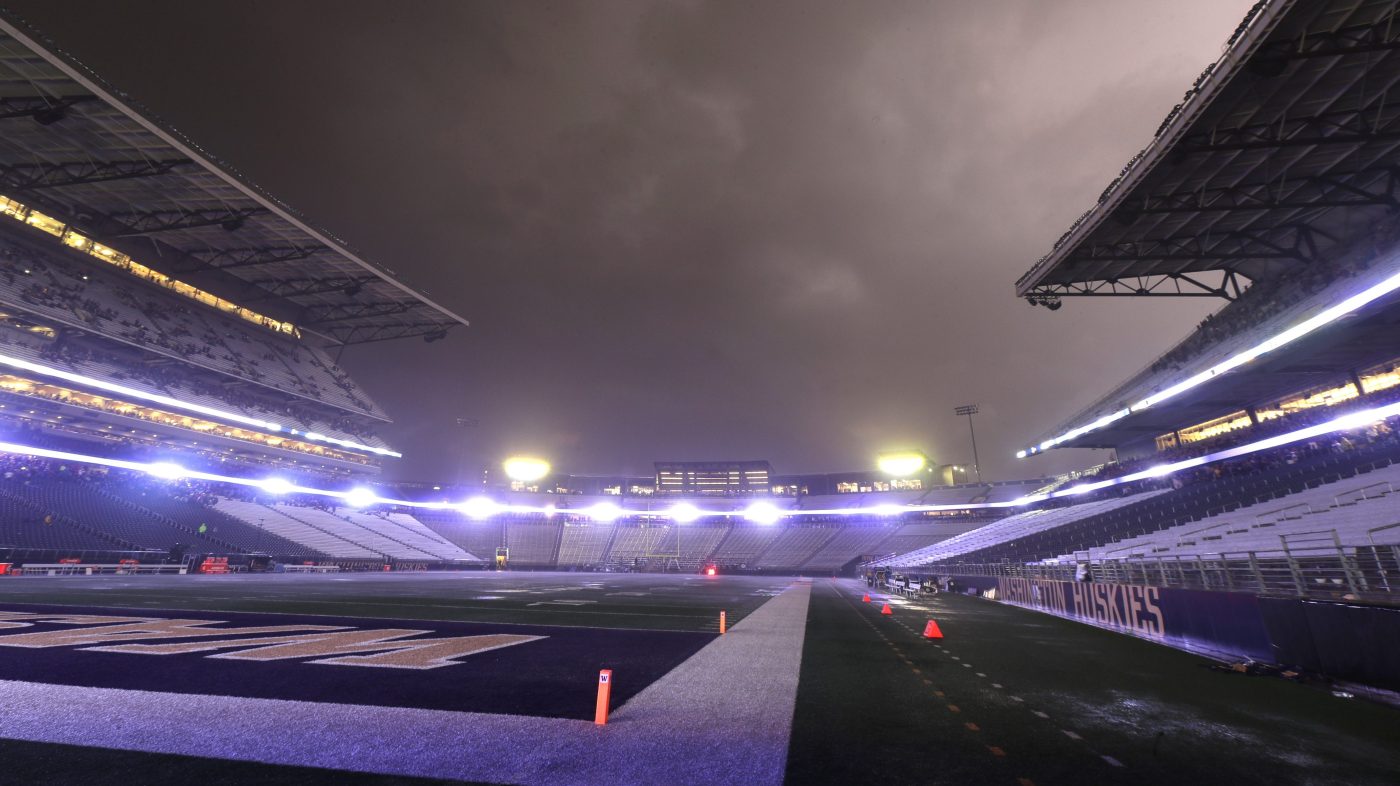The West Coast quartet will join the Big Ten in 44 days. Thanks to a public presentation by one member of the group, we can sketch the financial benefits accompanying the move.
Washington officials went before the university’s board of regents last week with a proposed budget for the 2024-25 fiscal year.
The projected revenues ($165 million) and expenses ($167 million), as reported by the Seattle Times, are comparable to the totals for UW’s final competition year in the Pac-12.
But one number was of particular interest to the Hotline: $42 million in revenue from Big Ten and NCAA distributions.
From that number, the broad fiscal picture gains focus — not only for the Huskies but their fellow transplants Oregon, USC and UCLA.
Allow us to explain …
The majority of conference and NCAA revenue distributions can be grouped into three buckets:
— NCAA Tournament units, which are based on the number of games played by a conference over a six-year period and paid out to the schools through the respective conferences.
— Postseason football payouts, with the College Football Playoff and New Year’s Six bowls as the primary sources of cash.
— Media rights agreements for regular-season and conference championship broadcasts of football and men’s basketball.
Washington and Oregon are entering the Big Ten as half-share members in the media rights bucket, with each school expected to receive roughly $30 million from the conference in 2024-25. (The half-share existence lasts through the remainder of the decade.)
That indicates a full share of media rights next year, through deals with Fox, CBS and NBC, will be worth about $60 million.
Now, let’s apply UW’s math to everyone else.
The Huskies expect $42 million from the conference, based on the presentation to the regents.
If we add the half share of media rights revenue the Huskies will not collect ($30 million) to their total revenue figure ($42 million), it suggests the schools receiving full shares — including USC and UCLA — will collect checks worth about $72 million from the conference.
That represents a 20 percent increase over the most recent distribution figure available.
In the 2022-23 fiscal year, the final football and basketball seasons under the Big Ten’s old media rights deal, the longstanding members received average (total) distributions of $60.5 million, according to USA Today.
The distributions for 2023-24 will be based on the new media agreements (with Fox, NBC and CBS) but paid before the arrival of the West Coast schools. Those figures won’t be made public until the Big Ten releases its FY2024 tax documents next spring.
The payouts for the upcoming competition season, with all 18 teams? Those totals won’t be available until the spring of 2026.
As with all media contracts, the Big Ten’s deal includes an escalator clause: The payments in the first year are far lower than the payments in 2029-30, the final year of the agreement. (Presumably, annual increases are four or five percent.)
But because Year One of the Big Ten’s agreement with Fox, NBC and CBS unfolded in 2023-24, before the West Coast schools joined the conference, the full-share payment of $60.5 million cited by USA Today could be even lower than what would typically be the case.
Another consideration in sketching the Big Ten distributions: The College Football Playoff has two years remaining under the original deal with ESPN that pays each of the power conference schools about $6 million.
Starting in the fall of 2026, the CFP will operate under a new contract with ESPN that reportedly will spin off approximately $21 million to each Big Ten school.
There are a few too many unknowns to gain full clarity on Big Ten distributions in the second half of the decade. (Obviously, we cannot predict performance in the NCAAs.)
Related Articles
Why the Big 12 should consider private equity: Winning football can counteract the enrollment apocalypse
Mailbag: The merits of an NCAA grace-period waiver for WSU and OSU
Analyzing the value of the ‘Allstate 12’ conference (if the Big 12 makes a giant leap with naming rights deal)
CFB recruiting: Cal lands two-way star as WSU grabs three prospects
Expanded CFP spans three holidays and faces stiff competition from NFL
However, applying the insight gained from Washington’s budget presentation to the other breadcrumbs available, including the looming bump in CFP payments, it appears the full-share Big Ten schools will take home in excess of $90 million in conference distributions in the second half of the decade.
For Washington and Oregon, that likely means paychecks in the $60 million to $65 million range.
These projections might cause some fans to wonder how the Big Ten revenue numbers for the Ducks and Huskies would compare to their Pac-12 distributions had they opted to stay in the conference.
Even back-of-the-envelope numbers are difficult. The CFP payout model starting in 2026, which will send $21 million to UW and Oregon each year, would be far different in a world with five power conferences and the Big Ten unable to claim the Pacific Northwest powers for itself.
Also unknown: The likelihood of an intact Pac-12 reaching the subscription goals in the $25 million (per school) Apple media deal that would have triggered additional revenue guarantees.
It’s guesswork. All of it. But clearly, the difference between Pac-12 cash and Big Ten cash for the Ducks and Huskies is substantial, even as half-share members of their new home.
*** Send suggestions, comments and tips (confidentiality guaranteed) to pac12hotline@bayareanewsgroup.com or call 408-920-5716
*** Follow me on Twitter/X: @WilnerHotline
*** Pac-12 Hotline is not endorsed or sponsored by the Pac-12 Conference, and the views expressed herein do not necessarily reflect the views of the Conference.












